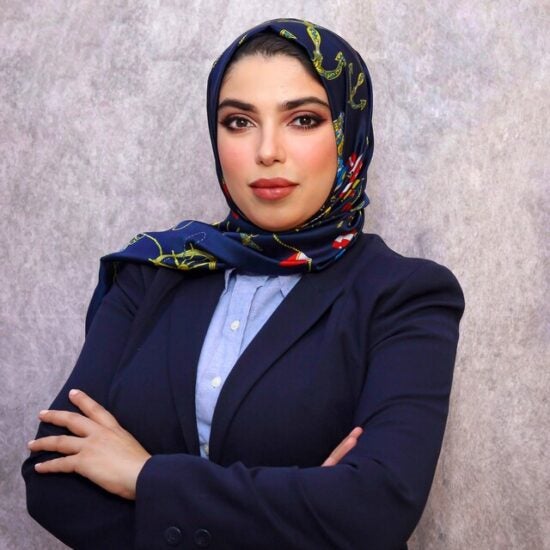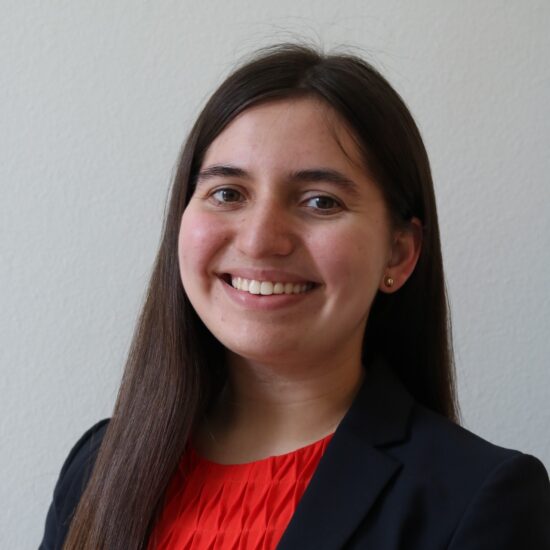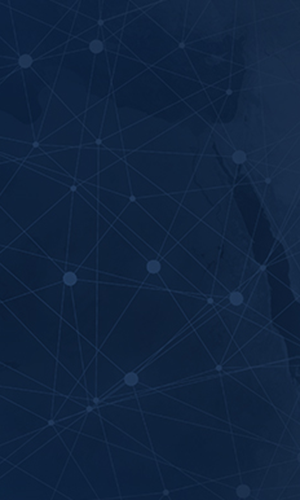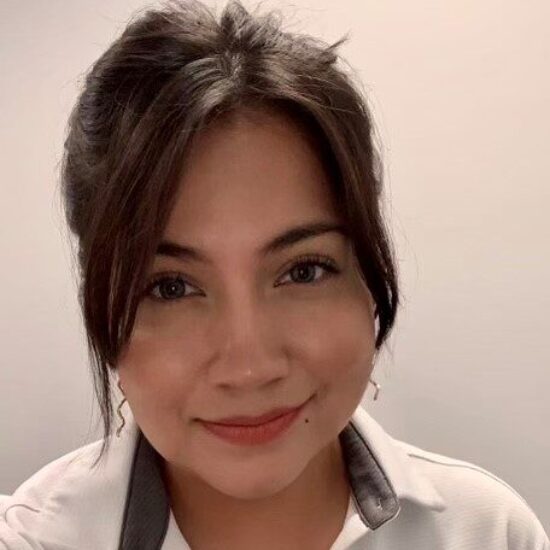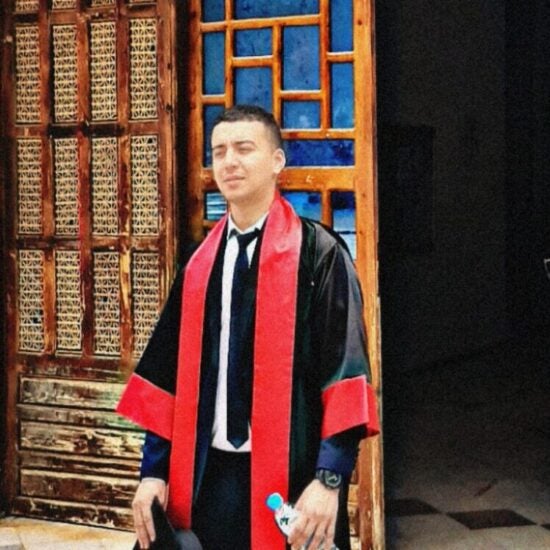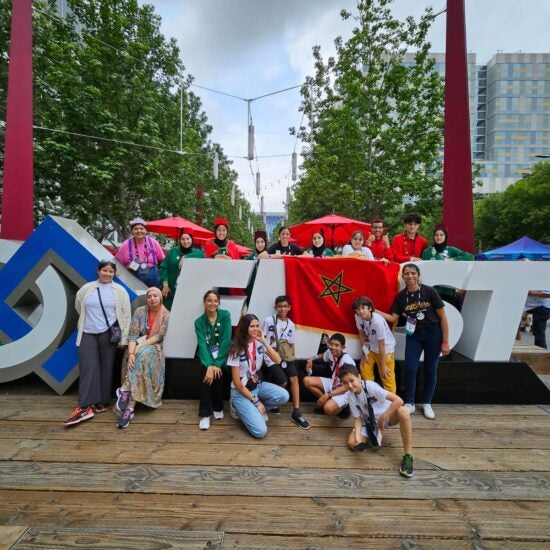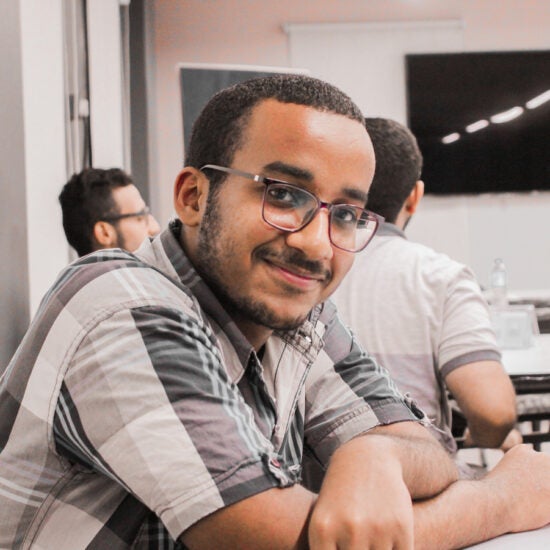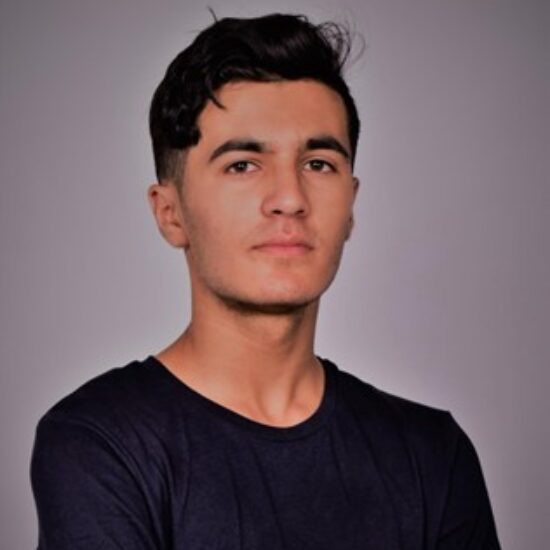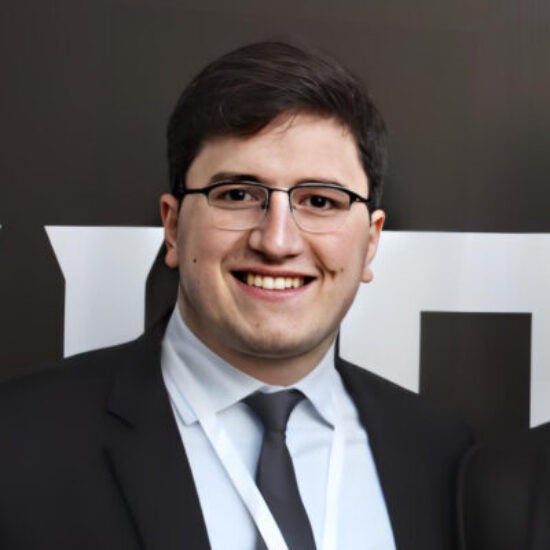When she was 16 years old, Azari Hamdani and her family fled Syria to Reyhanli, Turkey in order to escape ISIS. Although miles away from home, Azari found a sense of comfort in Karam House, a community innovation workspace designed for Syrian refugee youth. Azari, along with other students at Karam House Reyhanli and All Saints Academy in Florida, participated in Innovating Across Boundaries: a virtual exchange program designed by NuVu Studio and taught by partner schools across the United States.
Through Innovating Across Boundaries, students worked together to build prosthetic limbs for five advisors in Reyhanli. These advisors were refugees who had been injured during the Syrian war, and students took into account their advisor’s complex injuries and disabilities as well as their hobbies and wishes. Based on their advisor’s personal interests and specific needs, students used new technology to reimagine and redesign prosthetics.
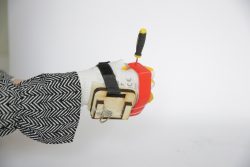
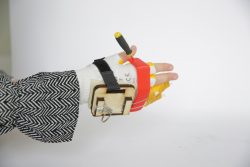 Azari worked with her partner Reem and with her peers oversees, Caden and Haley, to design and build the Correction Glove for Mohammed, a Syrian refugee who loved photography but whose hand was permanently injured by a ricocheting fragment during the war. The Correction Glove strengthens three fingers on Mohammed’s right hand – allowing him to control their movement and hold objects, like cameras – and the prosthetic is made up of three parts on his wrist, palm, and fingers and is entirely mechanical. “Working with [Mohammed] really opened my eyes in developing a new way of understanding of what life was like in Syria and Turkey,” said Haley. “It also brought a sense of realness and forced my partner and I to work diligently on a project to show Mohammed.
Azari worked with her partner Reem and with her peers oversees, Caden and Haley, to design and build the Correction Glove for Mohammed, a Syrian refugee who loved photography but whose hand was permanently injured by a ricocheting fragment during the war. The Correction Glove strengthens three fingers on Mohammed’s right hand – allowing him to control their movement and hold objects, like cameras – and the prosthetic is made up of three parts on his wrist, palm, and fingers and is entirely mechanical. “Working with [Mohammed] really opened my eyes in developing a new way of understanding of what life was like in Syria and Turkey,” said Haley. “It also brought a sense of realness and forced my partner and I to work diligently on a project to show Mohammed.
”Throughout the design process, students in the United States and Turkey collaborated on their projects by updating one another on their progress through weekly exchanges and providing feedback. After each meeting, both groups were able to make design changes to their prosthetics as they had access to 3D printers, coding and robotics, laser cutters, and more. The studio culminated in a final presentation of the project to both physical and virtual classmates, and the prosthetics were given to the advisors for daily use.
“The students were able to learn how to assess an injury and identify problems, which required extensive research,” said Noor, a mentor at Karam House. “They were also able to gain practical work experience in constructing a prosthetic and learned how to use design applications in both 2D and 3D.”
The participants also learned about one another. “I feel like I gained an appreciation for peoples’ motivation to learn because [the Karam House students] are in a country that is struggling politically and for them to go after school to do this – to learn and explore new possibilities – gave me admiration for their drive and motivation to learn,” said Jacob Barnett, a participant from All Saints Academy.
”Collaborating with the American students definitely impacted my perspective in a positive way: it taught me how to work with individuals who come from another culture,” Azari explained. “I used to be unsure about my career, but creating this prosthetic taught me that I definitely want to study medicine. Overall, I am really happy with what we were able to accomplish!”

 Azari worked with her partner Reem and with her peers oversees, Caden and Haley, to design and build the Correction Glove for Mohammed, a Syrian refugee who loved photography but whose hand was permanently injured by a ricocheting fragment during the war. The Correction Glove strengthens three fingers on Mohammed’s right hand – allowing him to control their movement and hold objects, like cameras – and the prosthetic is made up of three parts on his wrist, palm, and fingers and is entirely mechanical. “Working with [Mohammed] really opened my eyes in developing a new way of understanding of what life was like in Syria and Turkey,” said Haley. “It also brought a sense of realness and forced my partner and I to work diligently on a project to show Mohammed.
Azari worked with her partner Reem and with her peers oversees, Caden and Haley, to design and build the Correction Glove for Mohammed, a Syrian refugee who loved photography but whose hand was permanently injured by a ricocheting fragment during the war. The Correction Glove strengthens three fingers on Mohammed’s right hand – allowing him to control their movement and hold objects, like cameras – and the prosthetic is made up of three parts on his wrist, palm, and fingers and is entirely mechanical. “Working with [Mohammed] really opened my eyes in developing a new way of understanding of what life was like in Syria and Turkey,” said Haley. “It also brought a sense of realness and forced my partner and I to work diligently on a project to show Mohammed.